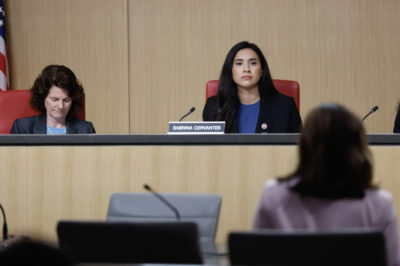Over the past few years, the world’s governments have clamped down on packaging waste due to the increased awareness of environmental issues. Although due to environmental protection, it can also be seen that the ripple effects of such packaging waste regulations go very deep into the global trade.
In the case of exporters and importers, packaging is not only a method of protection of goods, but rather it is also a part of product compliance. Companies doing international business have to deal with complicated sets of regulations that vary by area and can necessitate very significant changes in operations.
Overview of Recent Packaging Waste Regulations Worldwide
Packaging and packaging waste regulation is divergent depending on country and region, but it has generally become clear that certain trends are materializing on a worldwide basis:
- Extended Producer Responsibility (EPR): The producers and importers come under increased responsibility to take care of the process of completing the entire lifecycle of packaging.
- Recycling Content Mandates: In Europe and various states of the United States, there are already requirements to reach a minimum of the use of recycled material in a range of specific types of packaging.
- Bans on Single-Use Plastics: In the UK, India, and in some parts of Southeast Asia, the use of particular plastic objects: straws, bags, and cutlery, has already been banned.
- Eco-Labeling Requirements: The Requirements are that the products should be labeled to indicate whether it is recyclable or have an environmental impact.
- Importation of Waste: Certain nations, such as China, with its policy named the National Sword policy, have strictly limited the kind of waste and trash materials they will receive.
Examples of these packaging waste regulations getting more thorough and more enforceable include the European Union packaging and packaging waste directive (PPWD), the U.S. Break Free from Plastic Pollution Act, and Canadian, Australian, and Japanese equivalents to such a law.
Impact on Exporters and Importers
Exporters also experience the problem of having to make sure that their packaging conforms to the packaging regulations of all the destination markets. This usually implies localizing packaging designs, materials, and labeling. Lack of obedience may lead to:
- Customs Delays or Rejections
- Financial Penalties
- Brand Damage
Admin burden is also increased as businesses have to prepare a detailed record of the composition of the packaging, recycling certifications, or disposal processes.
Supply Chain Adjustments Required
The supply chain is commonly called to undergo structural changes to meet new waste-packaging regulations. Businesses might have to:
- New Material Sources: Using recycled or biodegradable materials instead of using virgin plastic.
- Collaborate with Compliant Vendors: The company can work with vendors who can assure compliance with regulations.
- Redesign boxing: Developing forms with less material or more easily recycled.
- Reduce Logistics: With packages that are lighter and smaller, less waste will be created and fewer transport-related emissions will be emitted.
- Increase Traceability: The recording of the origins of materials and recycling routes using digital items such as QR codes or RFID tags.
Such adjustments do carry front-end expenses, yet they open up opportunities to generate efficiencies and even differentiate in the market.
Opportunities Created by Packaging Waste Regulations
The new rules pose problems, but they new rules also create opportunities to innovate and achieve a competitive edge:
- Market Differentiation
- Materials Innovation
- Operational efficiency
- Green Markets
- Relationship Transparency and Reputability
Business operations are all about the mentality and habits adopted by the company regarding the rules, as they are not viewed as limitations but rather as a way of bringing improvement into the picture.
Risks of Non-Compliance
The single-use economy produces 350 million tons of plastic waste each year. The consequences of producing packaging waste are growing more and more severe:
- Legal: Fines, product recalls, and bans on import/export.
- Loss of market access: In case of an enduring non-compliance, it may lead to the exclusion of certain markets with great profits.
- Supply chain disruption: Goods delayed at customers’ control or back to those to whom they belong can cause a costly delay.
- Reputational legacy: Backlash and poor publicity due to consumer action may harm brands.
- Greater Operating Costs: It is usually cheaper to be proactive and comply than rectify the non-compliance later.
To companies with a global presence, one missed aspect in packaging waste policies can result in a global effect.
Best Practices for Businesses
To help companies negotiate this changing regulatory environment, they can follow several best practices, which could include the following:
- Be aware: Keep track of the law in all applicable markets and look ahead to what is likely to happen.
- Audit Your Packaging: Conduct checks over the materials, design, and suppliers on a regular basis to determine compliance.
- Invest in Design for Environment (DfE): Make packaging and sustainability go together by designing with sustainability in mind.
- Co-operation Across the Supply Chain: Co-operate with manufacturers such as Utz, logistics, and recyclers to certify compliance through the supply chain.
- Training Staff: At an organizational level, training should focus on how to attain sustainability objectives and regulatory requirements.
- Cut Notes: Record everything so you can show exactly following the regs in case of an audit or inspection.
Businesses can use compliance guidelines as a source of resilience and competitive edge by integrating the practices into operations.
Conclusion
New packaging waste policies are redefining the dynamics of international trade, and they have been putting pressure on exporters and importers to reconsider their material choices and design, as well as the supply chain. The compliance burden is a reality, but so is the chance to innovate and be efficient and build a brand. Such new rules could ultimately be less of an impediment to trade than to a more accountable, sustainable global economy.






